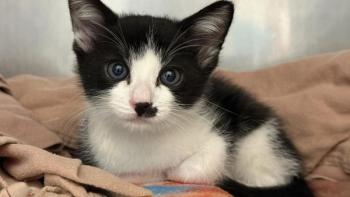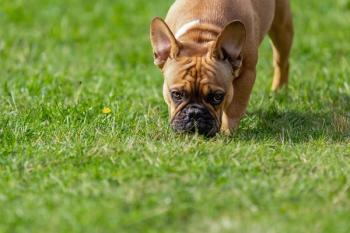
Wound repair: Dog ear correction techniques
Dr. Steven Swaim provides an overview of the various methods to correct this skin defect.
By delaying dog ear correction for a minimum of 14 to 21 days after the transposition flap was placed, the flap has a chance to develop a new blood supply from the flap edges and underlying vessels, thus decreasing its dependence on vessels entering through the base. Nevertheless, cutting into the base of the flap should be avoided, so you should keep that in mind when selecting which correction technique to perform. The shape of the dog ear may also be a governing factor in which technique you select.
Make an incision through the dog ear (1). Excise the two resulting skin triangles (2). Perform a smooth closure after the dog ear removal (3).
[Illustration adapted from Swaim SF. Management and reconstruction of traumatized skin. Vet Audio Rev 1978;7.]
Incise a dog ear along one side of its base (1). Define and excise one large skin triangle (2). Perform a smooth closure after dog ear removal (3).
[Illustration adapted from McGregor IA. Fundamental techniques of plastic surgery and their practical applications. 8th ed. Edinburgh, Scotland: Churchill Livingstone, 1989;15.]
Extend the fusiform shape to remove the dog ear (1). Perform a smooth closure after dog ear removal (2).
[Illustration adapted from Jankaukas S, Cohen IK, Grabb WC. Basic technique of plastic surgery. In: Smith JW, Aston SJ, eds. Plastic surgery. 4th ed. Boston: Little Brown, 1991;7.]
Dog ear (1). Remove the dog ear in an arrowhead-shaped skin section (2). Perform a Y-shaped closure of the resulting defect (3).
[Illustration adapted from Jankaukas S, Cohen IK, Grabb WC. Basic technique of plastic surgery. In: Smith JW, Aston SJ, eds. Plastic surgery. 4th ed. Boston: Little Brown, 1991;7.]
Make an incision through the dog ear (1). Remove one side of the dog ear as a triangle (2). Use the remaining side of the dog ear to close the defect (3).
[Illustration adapted from Swaim SF, Henderson RA. Small animal wound management. 2nd ed. Baltimore: Williams and Wilkins, 1997;238-239.]
If a dog ear formed because one side of the wound is longer than the other, make a short right-angle incision at the base of the dog ear (1). Define the skin to be excised (2). Perform an L-shaped closure of the resulting defect (3).
[Illustration adapted from Jankaukas S, Cohen IK, Grabb WC. Basic technique of plastic surgery. In: Smith JW, Aston SJ, eds. Plastic surgery. 4th ed. Boston, Mass: Little Brown, 1991;7.]
Newsletter
From exam room tips to practice management insights, get trusted veterinary news delivered straight to your inbox—subscribe to dvm360.






